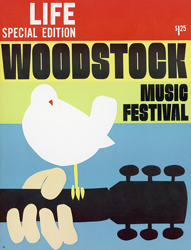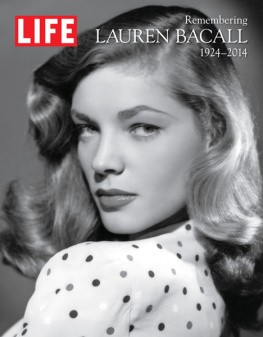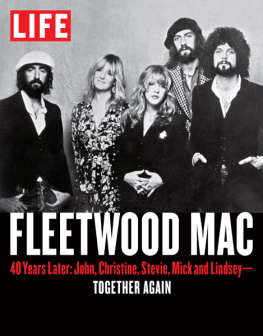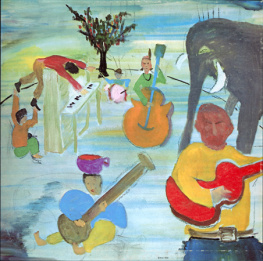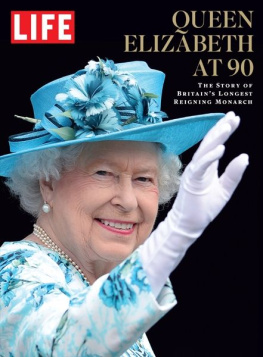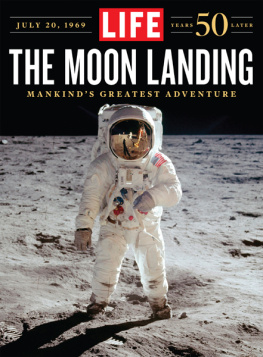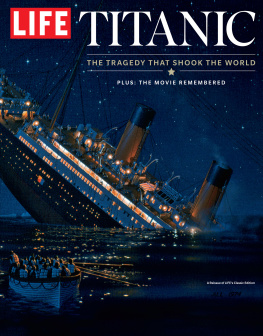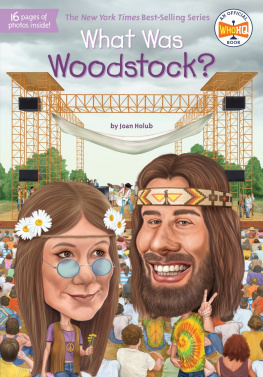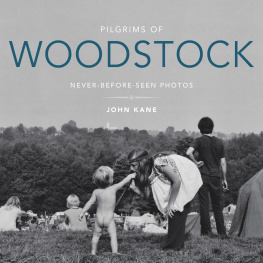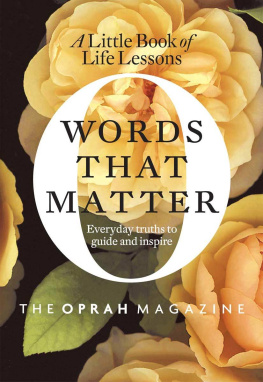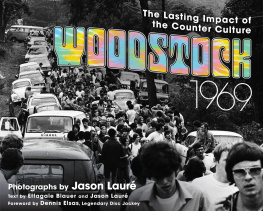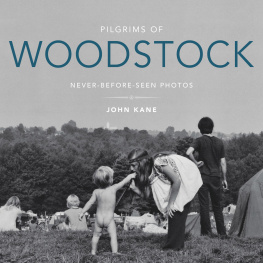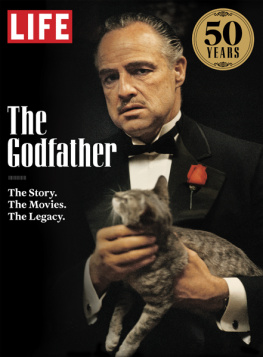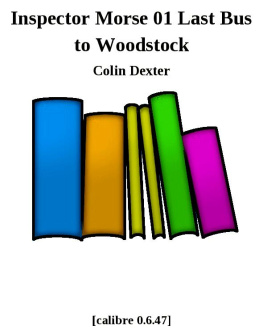The Editors of LIFE - LIFE Woodstock at 50
Here you can read online The Editors of LIFE - LIFE Woodstock at 50 full text of the book (entire story) in english for free. Download pdf and epub, get meaning, cover and reviews about this ebook. year: 2019, publisher: TI Inc. Books, genre: Non-fiction. Description of the work, (preface) as well as reviews are available. Best literature library LitArk.com created for fans of good reading and offers a wide selection of genres:
Romance novel
Science fiction
Adventure
Detective
Science
History
Home and family
Prose
Art
Politics
Computer
Non-fiction
Religion
Business
Children
Humor
Choose a favorite category and find really read worthwhile books. Enjoy immersion in the world of imagination, feel the emotions of the characters or learn something new for yourself, make an fascinating discovery.
- Book:LIFE Woodstock at 50
- Author:
- Publisher:TI Inc. Books
- Genre:
- Year:2019
- Rating:3 / 5
- Favourites:Add to favourites
- Your mark:
- 60
- 1
- 2
- 3
- 4
- 5
LIFE Woodstock at 50: summary, description and annotation
We offer to read an annotation, description, summary or preface (depends on what the author of the book "LIFE Woodstock at 50" wrote himself). If you haven't found the necessary information about the book — write in the comments, we will try to find it.
LIFE Woodstock at 50 — read online for free the complete book (whole text) full work
Below is the text of the book, divided by pages. System saving the place of the last page read, allows you to conveniently read the book "LIFE Woodstock at 50" online for free, without having to search again every time where you left off. Put a bookmark, and you can go to the page where you finished reading at any time.
Font size:
Interval:
Bookmark:


WOODSTOCK
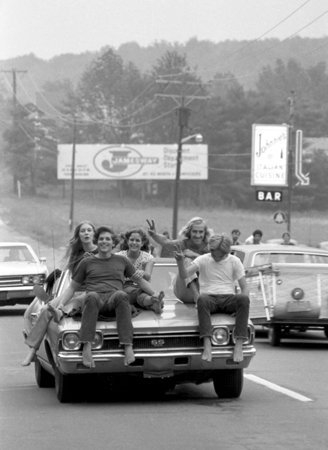
FOR SOME, THE RIDE TO Woodstock was a blast. For most, it turned into a slow roll and then a long, long walk. Yet somehow nearly half a million made it to their destination.
Back To The Garden
In the summer of 1969, America was reeling: Political turmoil, a wretched war, an erosion of hope. Then, in August, came the miraculous surprise of Woodstock
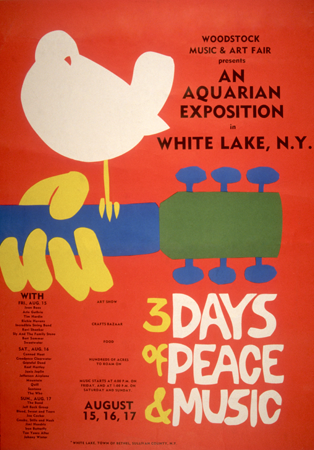
AMERICA IS HOPELESSLY DIVIDED. How many times daily do rueful cable pundits, Internet oracles, and TED talkers remind us of this dispiriting state of affairs? Weve devolved into tribes, they say, Red vs. Blue, hunkered down in ideological and demographic silos, ranting in echo chambers. The news cycle is a relentless 24/7 barrage of breaking cataclysms and outrages, real and imagined. Mass shootings. Foreign cyberattacks. Eroding norms and failing institutions. And all of it stoked by a social media that, while ostensibly designed to bring us together, seems devilishly adept at tearing us apart.
Have things ever been this bad? Or worse? Well, yes. For starters there was the Civil War, in which Americans slaughtered 620,000 other Americans, primarily over the right to own fellow human beings. But really, we neednt go back that far. A half century will dosay to the summer of 1969, a period of social and political strife that threatened to swallow us up in existential despair. The Vietnam War ground on, tearing at the countrys heart with no end in sight. It is difficult today to convey the level of anguish that conflict engendered. In our own era, an all-volunteer military ensures that Americas wars directly affect only a small slice of the population. These wars are remote, so much so that, after a while, they scarcely create major headlines. But in 69, for families all across the country, Vietnam was deeply, gut-wrenchingly personal because of the draft, which put any healthy young man between 18 and 26 at risk of getting himself bayoneted or blown to bits in a jungle on the other side of the globe.
In 1969, of course, Americas wounds were still raw from the traumas of 1968, when the assassination of Dr. Martin Luther King Jr. seemed to symbolize shattered hopes for racial reconciliation and sparked rioting in more than 100 cities across the country. Two months later, the murder of New York senator Robert F. Kennedy, who had been running for President on a progressive antiwar platform, provoked a national paroxysm of griefand flashbacks to the 1963 assassination of his older brother President John F. Kennedy, the tectonic tragedy commonly said to have signaled the end of American innocence, if such a thing ever existed. With surging candidate RFK cut down at 42, the 1968 race saw antiwar protests and a violent police response at the Democratic National Convention in Chicago. The election itself reflected a deeply conflicted national mood: Republican Richard M. Nixon edged the Democratic candidate, Vice President Hubert Humphrey, by fewer than 500,000 popular votes. (Embattled President Lyndon B. Johnson had declined to run for reelection.) Nixon had won only 43.4 percent of the vote, thanks in part to segregationist firebrand George Wallace, who siphoned off 9 million votes and won five southern statesa howl of white racist grievance in the civil rights era.
A lot of people voted for Nixon because they thought he was going to end the Vietnam war, says historian Rick Perlstein, author of Nixonland: The Rise of a President and the Fracturing of America . Nixon talked about bringing us all back together and rang in his presidency with an uplifting and unifying speech. (We have endured a long night of the American spirit, the new President said at his inauguration. But as our eyes catch the dimness of the first rays of dawn, let us not curse the remaining dark. Let us gather the light.)
Darkness persisted, however. The war raged on, protests intensified, and Nixon would become an increasingly paranoid, divisive leaderwith an assist from his incendiary wingman, Vice President Spiro T. Agnew. The Sisyphean nature of the Vietnam conflict was encapsulated in a battle in South Vietnam to shut down a strategically insignificant enemy camp atop a mountain designated Hill 937. Met with rocket grenades, mines, and automatic weapon fire, the Americans pulled back. For 10 days, they charged up the hill and retreated, over and over, until finally, on May 20, the United States took the objective, at a cost of 84 American troops killed and 480 wounded. But less than a week later, after Army brass had declared a tremendous, gallant victory, U.S. forces abruptly gave up control of the ground that Army grunts, during the carnage, had dubbed Hamburger Hill. For many Americans, Perlstein suggests, the battle symbolized the futility of the whole misadventure in Southeast Asia and the impossibility of any hope or redemption. In a sense, 1969 was not so much about division but dashed hopes and disillusionment, especially after the terrible year of 1968. But if 1968 gets all the ink, 1969 was arguably more melodramatic.
IT WASNT JUST THE WAR. If you think our Internet-goosed news cycles are dizzying, consider all the earthshaking events that transpired just in the late spring and summer of 69. A month after Hamburger Hill, on June 28, the Stonewall riots broke out as the gay community in New York Citys Greenwich Village rose up and lashed back at police after a raid on a popular gay bar. On July 18, Senator Ted Kennedy drove his car off a bridge into Poucha Pond on Chappaquiddick Island, Massachusetts, resulting in the death of his 28-year-old passenger, Mary Jo Kopechne. Kennedy admitted leaving the scene. All our national myths were unraveling, including the myth of Camelot, Perlstein says. Here Kennedy got drunk, drove this girl into the water, and didnt rescue her. Its the absolute reversal of JFK heroically saving all his fellow sailors in the Pacific in the PT boat. On the night of August 8, the idealism of the counterculture took a traumatic hit when members of failed musician Charles Mansons cultish, drug-addled Family invaded the Los Angeles home of director Roman Polanski (who was out of the country) and butchered his pregnant wife, actress Sharon Tate, and four others.
Still, there were glimmers of light that summer, one shining from 240,000 miles away: On July 20, 1969, astronaut Neil Armstrong took his one small step, planting his left boot on the lunar surface to become the first human being to walk on the moon. Half a billion people around the world were transfixed, united, if only for a moment, by sheer wonder.
ANOTHER UNIFYING EVENT that wild summer was far more down-to-earthliterally in the mud. And it would become a transcendent cultural touchstone, a defining moment for an entire generation. From August 15 to 18, on Max Yasgurs 600-acre dairy farm in the town of Bethel, New York, an unlikely group of investors called Woodstock Ventures bankrolled a music festival. Originally billed as An Aquarian Exposition: 3 Days of Peace & Music, the event quickly came to be known as Woodstock. It sounds like a quaint country fair, but in fact the festival was designed to be dazzling and monumental. More than 30 acts were slated to perform, representing everything from folk to blues to soul, from hard rock to psychedelia and even 50s doo-wop. Some artists were already famousthe Who, the Grateful Dead, Janis Joplin, Jimi Hendrix; for others, like Richie Havens, Santana, and Joe Cocker, the festival would catapult them to superstardomwith a little help from Woodstock , an Oscar-winning documentary film by Michael Wadleigh, which hit theaters the following year.
Next pageFont size:
Interval:
Bookmark:
Similar books «LIFE Woodstock at 50»
Look at similar books to LIFE Woodstock at 50. We have selected literature similar in name and meaning in the hope of providing readers with more options to find new, interesting, not yet read works.
Discussion, reviews of the book LIFE Woodstock at 50 and just readers' own opinions. Leave your comments, write what you think about the work, its meaning or the main characters. Specify what exactly you liked and what you didn't like, and why you think so.

